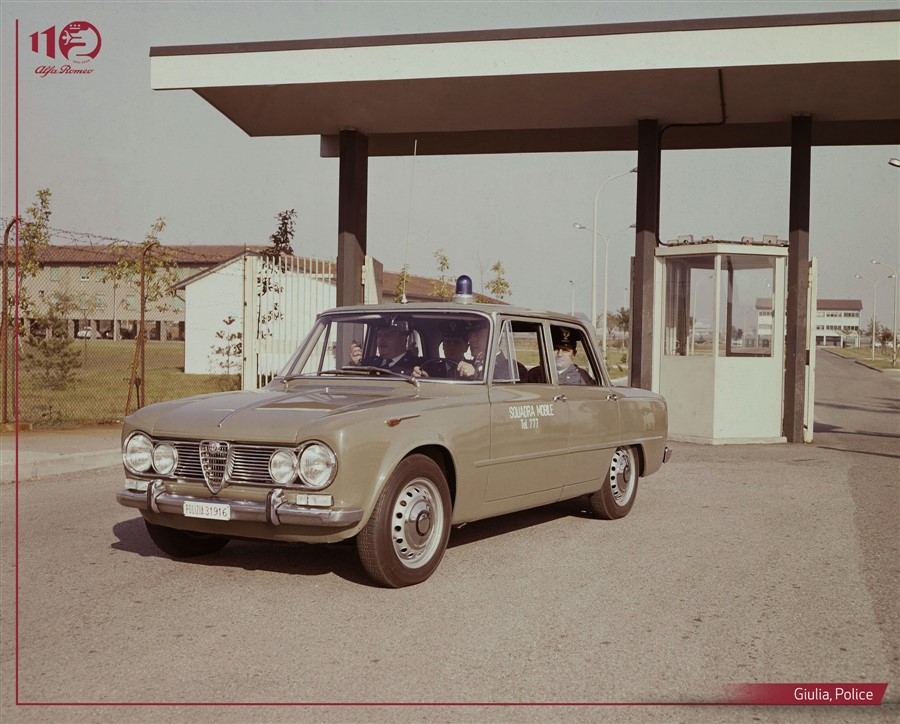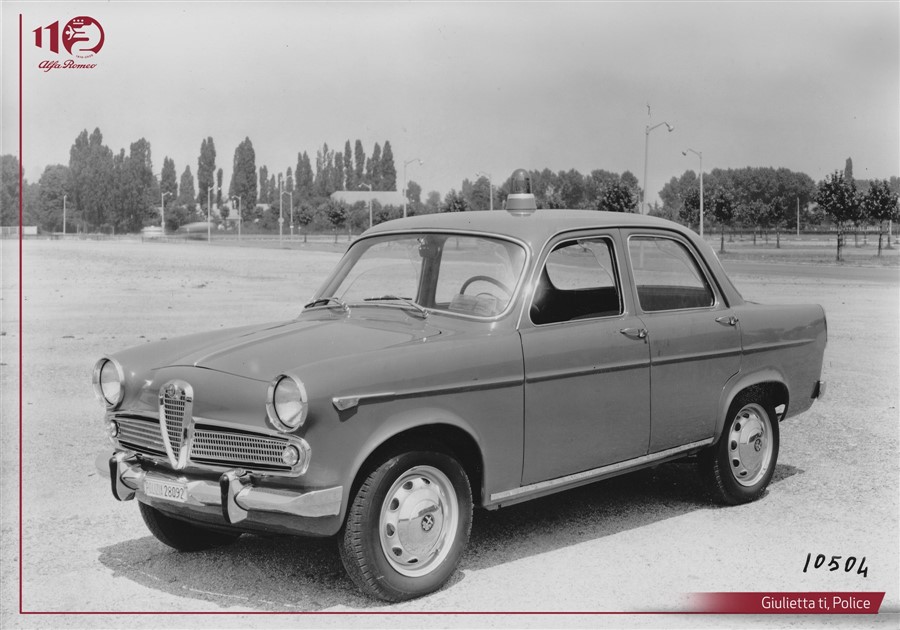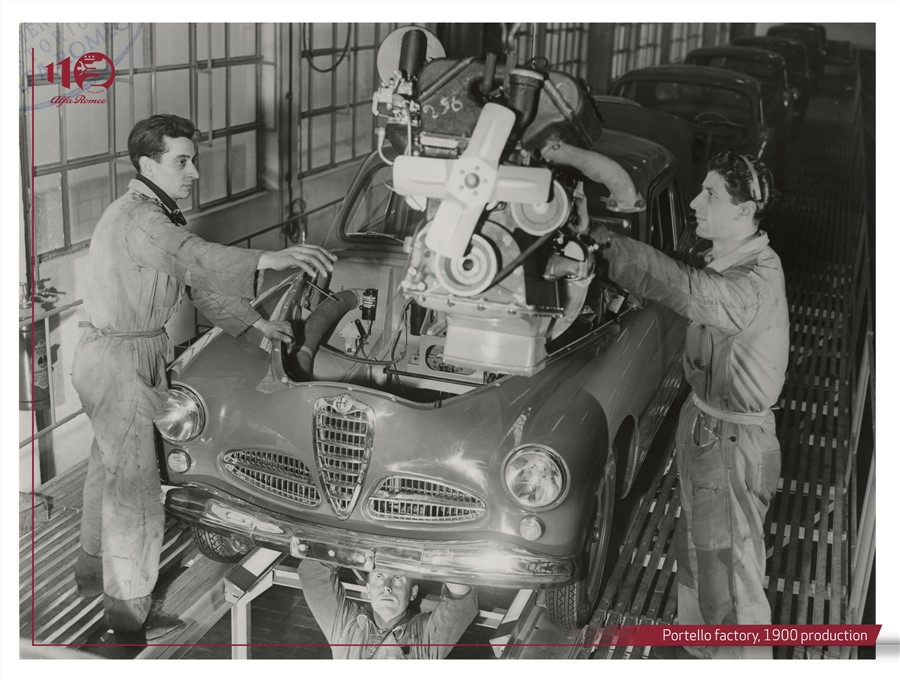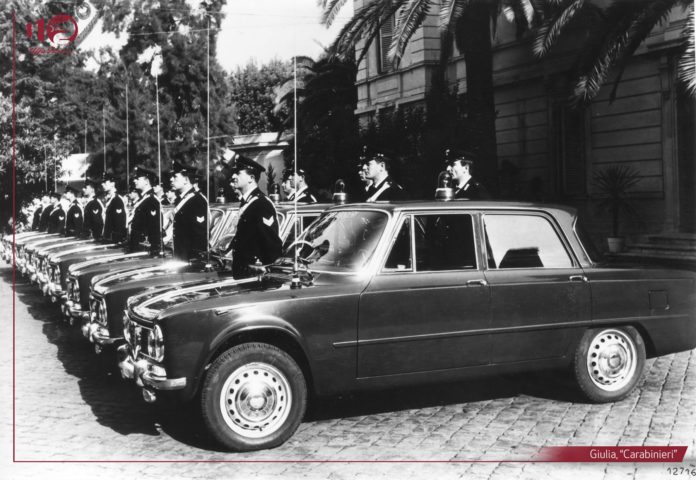In post-war Italy, Alfa Romeo cars were legendary. They proved to be faster than any other car, both on the track and on the road. They had all the right technical and symbolic characteristics to become the natural choice for the State Police Corps.
The connection between Alfa Romeo and the police has an interesting place in Italian history. From the 1950’s on, Alfa Romeo cars became the official emergency call-out vehicles. They were known as “volanti” and as they became a familiar sight, so too did they earn other nicknames. Those used by the State Police became known as “Panthers” and those of the military police were called “Gazelles”.
The very first Panther was an Alfa Romeo 1900, built in 1952, its aggressive silhouette having inspired its name.

The first Gazelle came into use a few years later. The most famous police car of all was the Giulia Super, but the Police used many other Alfa Romeo models, practically all the most important ones, from the Matta to the Alfasud, Alfa 75, Alfetta, 156 and the Giulia in use today.
Appointed director of design in 1946, Orazio Satta Puliga had a hard task ahead of him. Not only did he need to rebuild everything that had been destroyed by the war, he also had to transform an artisan company into a modern manufacturing force.
When Satta Puliga arrived, Alfa Romeo was producing every single mechanical part at its Portello plant. He rationalised the process, outsourcing the production of secondary parts and cutting the costs.
Satta Puliga’s 1900, which dates to 1950, was the first left-hand drive Alfa Romeo and the first to have a monocoque body. He abandoned the traditional six- and eight-cylinder engines in favour of a new four-cylinder with aluminum cylinder head and chain-drive dual overhead camshafts.

The engine was powered by a single carburetor, offering incredibly good performance and low horsepower. The 1900 delivered 80hp or 59kW. It was agile and fast and very easy to drive. Its launch slogan was “The family car that wins races”.
The 1900 was also the first Alfa Romeo to be produced on an assembly line. The total manufacturing time needed to produce one vehicle was reduced from 240 to just 100 hours. This new approach led to an unprecedented success in terms of sales. The 1900 alone sold more than the total Alfa Romeo production of other models up until that time.
While the 1900 set Alfa Romeo on the serial production course, it was with the Giulietta that it truly became a large-scale automotive factory.
Alfa Romeo focused all its design and industrial resources on this new objective. The Giulia became the product that defined this turning point in Alfa Romeo’s history, a car designed to boost sales but at the same time confirm the brand’s technical and sporting traditions.
The new Giulietta returned to be the link between Alfa Romeo and the Italian police. The first Gazelle of the Carabinieri was none other than a Giulietta, destined for the patrol service. It commenced service equipped with a radio system for communicating with headquarters and the Italian Army’s referred to it as fast, agile and tough.
Shorter, narrower and lighter than the 1900, the Giulietta took Alfa Romeo into a new segment. It offered a modern, streamlined exterior and comfortable interior, as well as exceptional road holding, quick starting and speed. Its all-Aluminium engine delivered 65hp or 48kW and a maximum speed of 165km/h.
The Giulietta was a roaring success, becoming so popular that it earned the nickname “Italy’s sweetheart”. Its sales record is just as extraordinary with over 177 000 units being sold.

The Giulia was one of the first vehicles in the world to feature occupant safety in its construction. The front and rear parts were designed to absorb shock and crumple, while the passenger compartment remained extremely rigid, to protect its occupants, solutions that would only become compulsory much later.
The Giulia’s 1.6-liter twin cam engine was an evolution of the Giulietta’s 1.3-litre four-cylinder and it stood out for its sodium-cooled exhaust valves.
The vehicle was overwhelmingly successful. It achieved a total of over 570 000 sales (more than triple those of Giulietta) and it became an Italian icon.
Visitors to the Alfa Romeo Museum in Arese will find a room dedicated to Alfa Romeo in the world of film. It hosts many car appearances, but Giulia is the undisputed star of the show. In these movies where “cops and robbers” clash, Giulia often stars as both the police car and the getaway vehicle.
























































